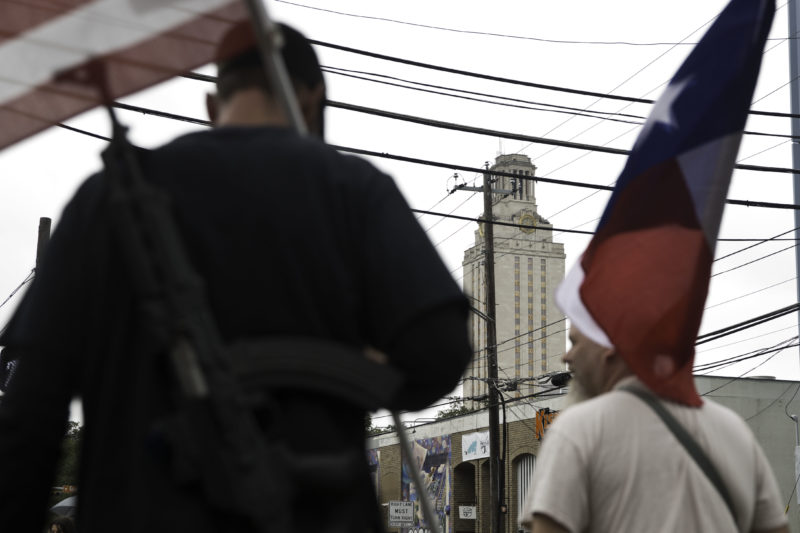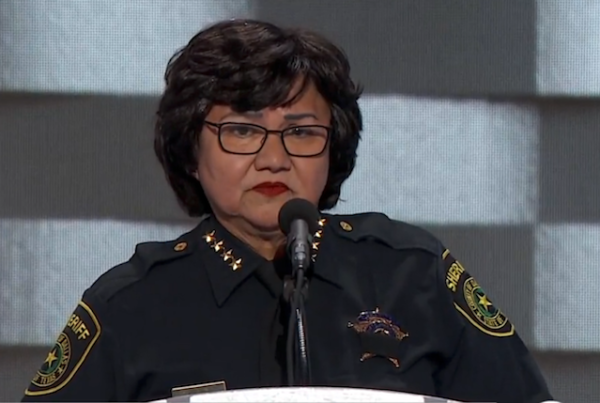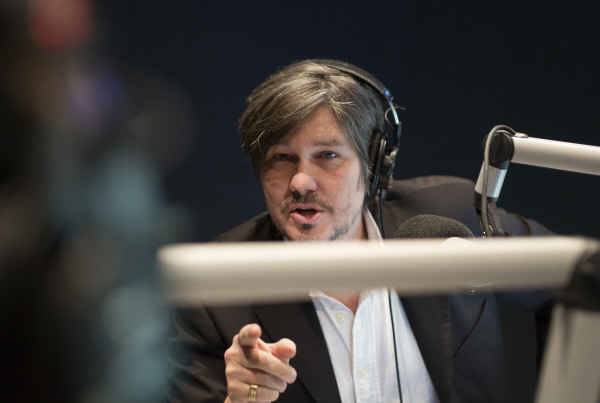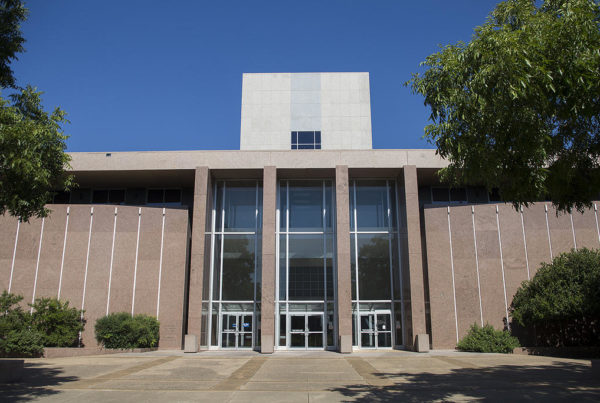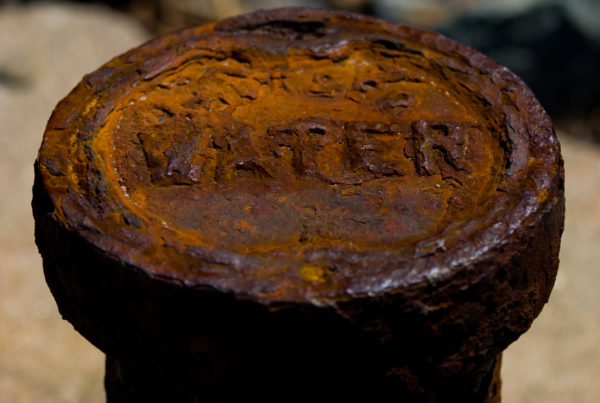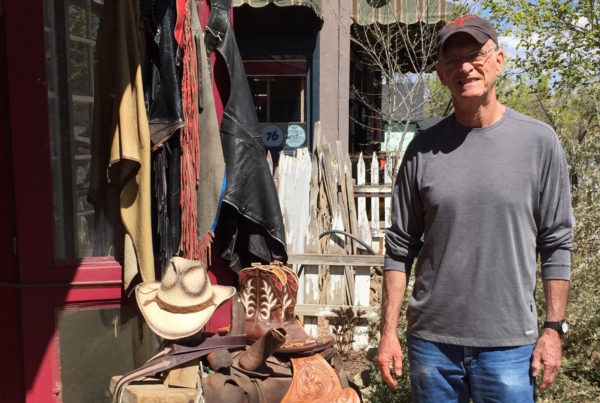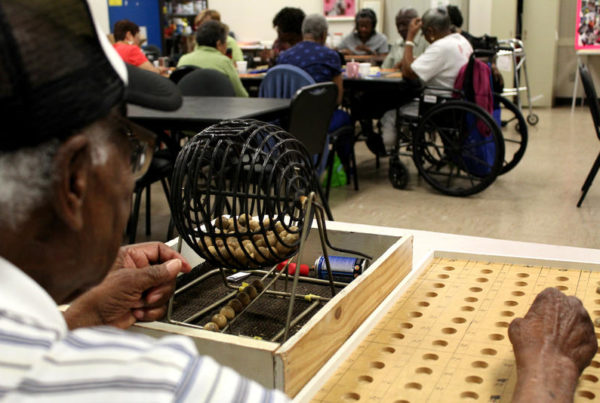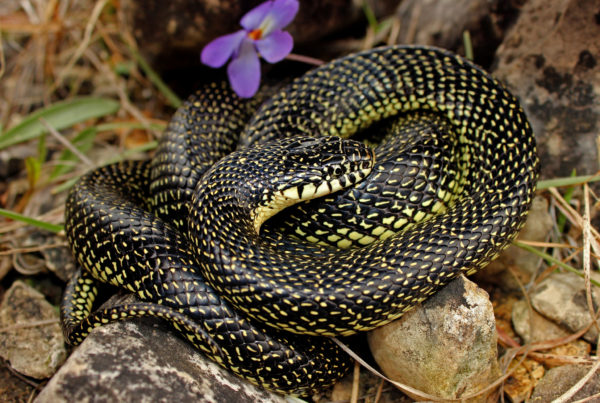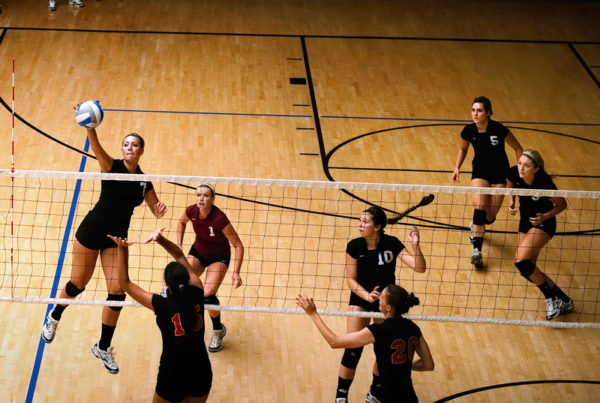“Out of the Blue: 50 Years After the UT Tower Shooting” is Texas Standard’s oral history on the anniversary of the first public mass shooting of its kind. This story is from partner organization Texas Public Radio.
Texas gun regulations, especially for handguns, began loosening some 25 years ago. It’s a trend that seems to coincide with people feeling the need to protect themselves – a feeling that runs through Texas history.
Former state land commissioner Jerry Patterson collects Texas history, the firearms that tell the story of how law and order was forged at the end of a gun barrel.
“Instead of a percussion cap,” he says, “you use powder. And when you fire the weapon there is flint and a spark.”
Patterson owns a virtual museum of firearms: muzzle loaders, antique stagecoach guns, Civil War-era rifles that date back to the mid-1800s. He says they help define who Texans are today.
“Firearms have always been part of Texas history,” he says. “We have people who are very independent-minded, people who are self-sufficient and people who needed arms in their daily lives.”
Before he was land commissioner, Patterson was the state senator who pushed to give Texans the right to carry concealed weapons.
In 1966, when Charles Whitman climbed the UT tower and fatally shot 14 people, many students and faculty legally carried long guns in their vehicles and used them to fire back at the gunman. But they didn’t have the right to carry handguns in public places, either concealed or in the open.
Patterson wanted to that to change. In 1991, a mass shooting helped do that.
George Hennard, an unemployed merchant marine, crashed his pickup into the Luby’s restaurant in Killeen and opened fire. He killed himself and 24 people. Former state Rep. Suzanna Hupp was in the restaurant and escaped, but both her parents died.
“It wasn’t until he actually worked his way to the front of the truck,” she says, “and I saw him very methodically take aim and shoot someone on the floor in front of him and then he walked to the next one, took aim and shot the next person – and that’s when I realized this person is just here to execute people.”
Hupp, a chiropractor, carried a gun but had left it in the car, because it would have been illegal for her at the time to take it inside the restaurant.
“I didn’t want to get caught with it, I didn’t want to lose my license to practice,” she says. “You know I did what most normal people think – ‘Eh, what are the odds?'”
In 1995, following the Luby’s massacre, Hupp joined Patterson in successfully passing the concealed weapons law. Patterson says Hupp provided the key testimony at a Senate committee hearing.
“She stood up and she walked around and she pointed her thumb and forefinger like a gun,” he says, “and said ‘And just imagine yourself in my situation as this guy walks around’ and she’s pointing at various members of the committee, just picking them off like sitting, helpless ducks.”
Since then Second Amendment advocates like Patterson have continued lobbying, chipping away at remaining restrictions on where and how guns can be used.
In 2007 they expanded the state’s Castle Doctrine with the Stand Your Ground Law. It cleared the way for gun owners to use deadly force if they feel threatened – not only in their homes, but also if they’re in their vehicles or places of business.
Seven years later, in 2015, gun rights activists scored two more big victories. Texas lawmakers passed the open carry law, giving handgun owners the option to show their holstered firearms in many public places.
They voted to lift the ban on concealed weapons on college campuses, which has been in place since Vietnam war protests in the 1960s.
Fifty years after Whitman, as mass shootings continue to make headlines around the country, gun sales in Texas are stronger than ever and there are fewer limitations on where Texans can carry their guns.
Harel Shapira, a Cambridge Fellow and sociology professor at UT-Austin, says that’s not surprising. Citizens are concerned about safety.
“People’s primary motivation for purchasing firearms shifted from hunting and sports to primarily self-defense (and) self-protection,” Shapira says. “And I think one of the things that reveals to us is an increasing sense of insecurity among the population.”
Having guns on their hips makes some Texans feel less vulnerable. Owners like Paul Liu, of Amigos BBQ in Austin, actually encourage customers to show off their hardware.
“I’ve had as many as 16 people in here and they’re all open-carrying,” Liu says. “None of the other customers say, ‘Oh, you know what? I’m going to leave because I don’t feel safe, I don’t feel comfortable.’ As a matter of fact, everyone just carries on a conversation with them.”
Jerry Patterson says Texas is just building on its history.
“In our constitution – Article I Section XXII – makes reference for the right for citizens to wear, W-E-A-R. Not just bear but wear,” Patterson says. “So a gun culture was inherent from 1836 to the present.”
The firearms are different than they were in the 1800s, but Patterson says the way many Texans feel about guns is pretty much the same.


